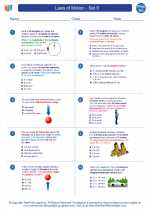Engulfment in Physics
Engulfment is a concept in physics that involves one object completely surrounding another object. This can occur in various contexts, such as in the study of fluid dynamics, electromagnetism, and gravitational forces.
Fluid Dynamics
In fluid dynamics, engulfment can refer to the complete surrounding of an object by a fluid. This occurs when a solid object is completely submerged in a liquid or gas. The forces acting on the object due to the surrounding fluid can be analyzed using principles of buoyancy, pressure, and viscosity.
Electromagnetism
Engulfment can also be observed in the context of electromagnetism, where the concept of electromagnetic induction involves a changing magnetic field engulfing a conductor, inducing an electromotive force and thus an electric current within the conductor.
Gravitational Forces
In gravitational physics, engulfment can refer to one celestial body being completely surrounded by the gravitational field of another body. This can lead to phenomena such as tidal forces, where one object is engulfed by the gravitational influence of another, leading to deformation and tidal effects.
Study Guide
To understand engulfment in physics, students should focus on the following key concepts:
- Understanding of buoyancy and fluid pressure in the context of engulfment in fluids.
- Application of Faraday's law and Lenz's law to understand engulfment in electromagnetism.
- Grasping the concept of gravitational fields and their effects on engulfment in celestial bodies.
Students can also practice problem-solving exercises related to engulfment, such as calculating the buoyant force on a submerged object, determining induced currents in engulfed conductors, and analyzing tidal effects due to gravitational engulfment.
Engulfment is a fundamental concept in physics that can be applied across various subfields, and a thorough understanding of this concept is crucial for students pursuing further studies in physics and related fields.
.◂Physics Worksheets and Study Guides High School. Laws of Motion - Set II

 Worksheet/Answer key
Worksheet/Answer key
 Worksheet/Answer key
Worksheet/Answer key
